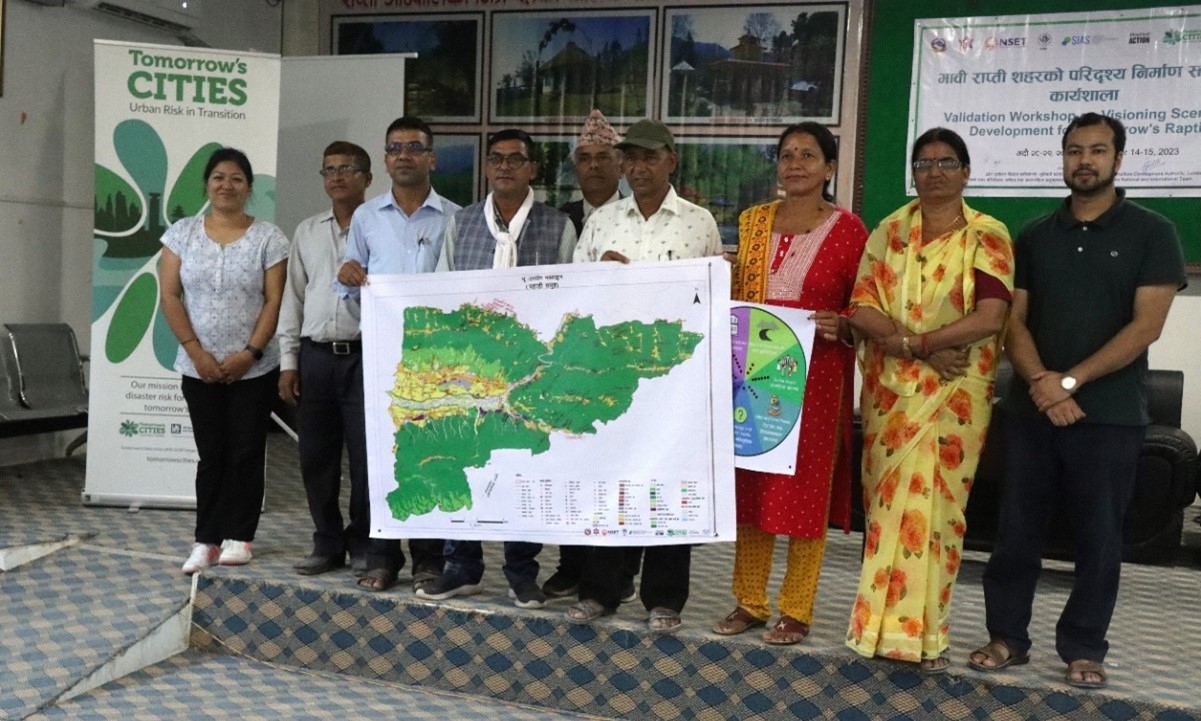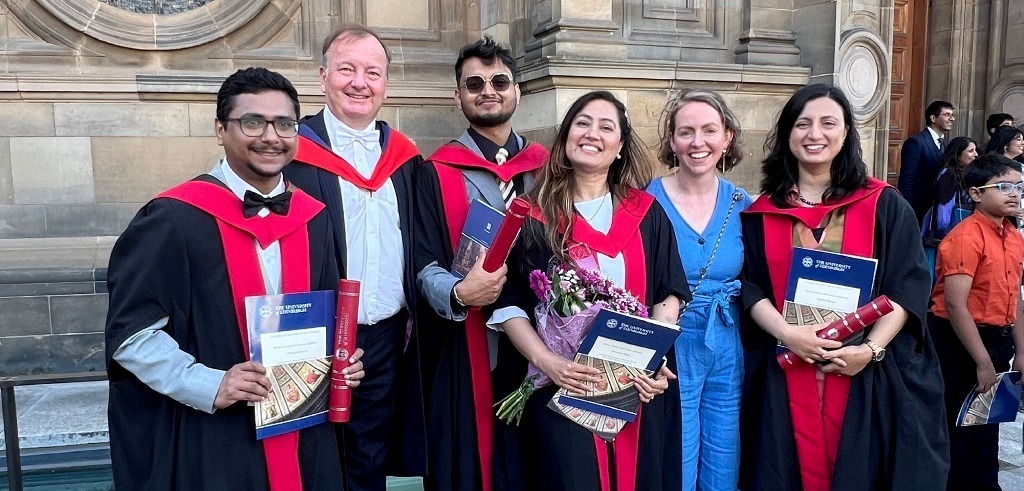
- Close
08/11/2023 | Rapti
Validating the Future Visions for the Rapti Valley.

Earlier this year, the Tomorrow’s Cities team engaged with Rapti Valley migrants during Future Visioning activities. These migrants shared their daily challenge but also how they aspire to create a better future, characterized by accessible infrastructure, earthquake-resistant homes, and the preservation of their natural treasures. Now, with these visions transformed into urban scenarios, our team has returned to Rapti. We tell you all about that engagement.
Translating visions and aspirations into urban plans
When earlier this year our team met a group of migrants during Future Visioning activities in the Rapti Valley, they told us about the challenges related to infrastructure, including the lack of roads and bridges that hindered access to vital services such as schools, markets, and healthcare facilities. Difficulties which have resulted in limited economic opportunities, compelling many to engage in labour from an early age and migrate to other areas. Despite this, this migrant’s community dedication to their neighbourhoods is evident and they yearn for a different future where new and improved infrastructure minimizes travel distances between communities, sturdy homes shield them from earthquakes and their agricultural lands, forests and rivers are preserved. This vision for the future was depicted in the land use maps they created with the support of Tomorrow’s Cities facilitators.

Urban plan designed during the Future Visioning workshops by the migrants of the Rapti Valley.
Now, having translated these future visions into scenarios that encompass the forthcoming urban landscape, comprising the physical environment and the social policies designed to mitigate potential hazards, we returned to Rapti. Our goal was to engage in discussions with the migrant community members and share our understanding of their visions and aspirations.
“During the Validation Workshops we have a thorough discussion about the land-use maps created by local community groups during Future Visioning workshops. The main goal here is to figure out how we can make the community’s ideas align better with what’s realistically possible. This considers not only regulations but also the hazard context so that the future city complies with these policy guidelines but is also disaster resilient.”
– Nuket Ipek Cetin – Tomorrow’s Cities Facilitator.

Digitized urban plan
Refining urban plans
During the review of the new land use map, workshop participants shared key suggestions. These include constructing bridges over the Rapti River to improve connectivity, expanding the road network for better urban access, creating a university zone on public land, and introducing a cable car service from Dhankhola temple to Baraha Daha in Laami Damar for tourism. They also propose a drainage canal along the Postal highway for monsoon rainwater management and to remove a resort in Lahareni.

High resolution urban plan.
Observation on the hazard context of the area were also pertinent and participants have pinpointed the top three concerns for various disaster scenarios such as flooding, fire, landslides or earthquakes. While for floods, their primary concerns include house damage, business losses, and challenges in distributing relief aid, the risk of landslides, flood due to erosion, prompts concerns about harm to local wildlife. Landslides, in turn, raise worries about village displacement, agricultural land damage, and road blockages.
“During the exercise, we ask participants to contemplate the hazards they find most relevant and then encourage them to consider how these hazards might impact their lives. Then, to understand what they value the most in case of a hazardous event, we guide them through an exercise where they are tasked with categorizing the importance of various assets, including infrastructures of different dimensions like schools, community centres, bridges and roads, as well as environmental assets.”
– Rajani Prajapati, Tomorrow’s Cities Facilitator.
The participants engaged in a passionate discussion, debating whether to give major priority to infrastructure or social assets, both recognized as vital during disasters. Some argued that individual households and families should come first in disaster response, while others emphasized the importance of unity and social assets for overcoming challenges. After deliberation, social assets arose as the most important value to be considered followed by infrastructure such as schools and housing, and environmental assets, jobs and livelihoods.

Analysing the digitized urban plan with the support of Tomorrow’s Cities facilitators.
The Validation Workshop concludes with the identification of policies designed to mitigate future hazard risks while aligning with the group’s core values. In this context, migrant participants have highlighted their top three policy priorities, addressing key issues such affordable housing permits, the development of industrial zones to mitigate the problem of youth migration and the sustainable development of the Rapti River and Chure regions.
These policy priorities underscore the group’s dedication to building a more resilient and sustainable future for the Rapti region, emphasizing disaster risk reduction and the conservation of critical natural assets.

Wheel of assets used to classify the importance that the stakeholders attribute to different assets.
This comprehensive exercise carried out by the Tomorrow’s Cities team has proven to be instrumental in bridging the gap of understanding between the team and the migrant community. It has shed invaluable light on this community’s unique worldview and how it profoundly shapes their visions for the future of Rapti. Simultaneously, it has enhanced the participants’ grasp of the region’s hazard context and has ignited a powerful sense of motivation.


